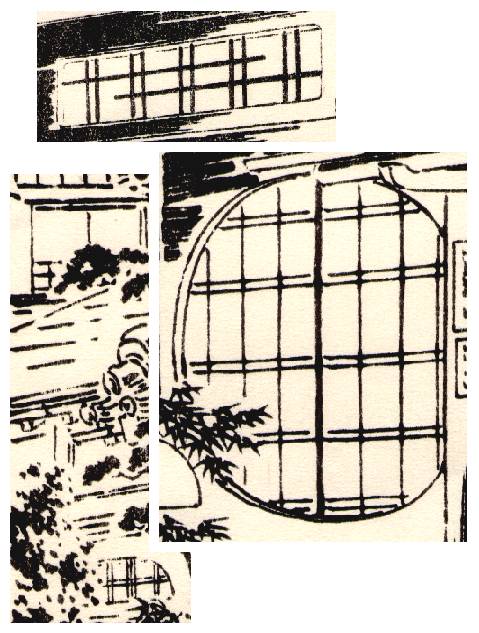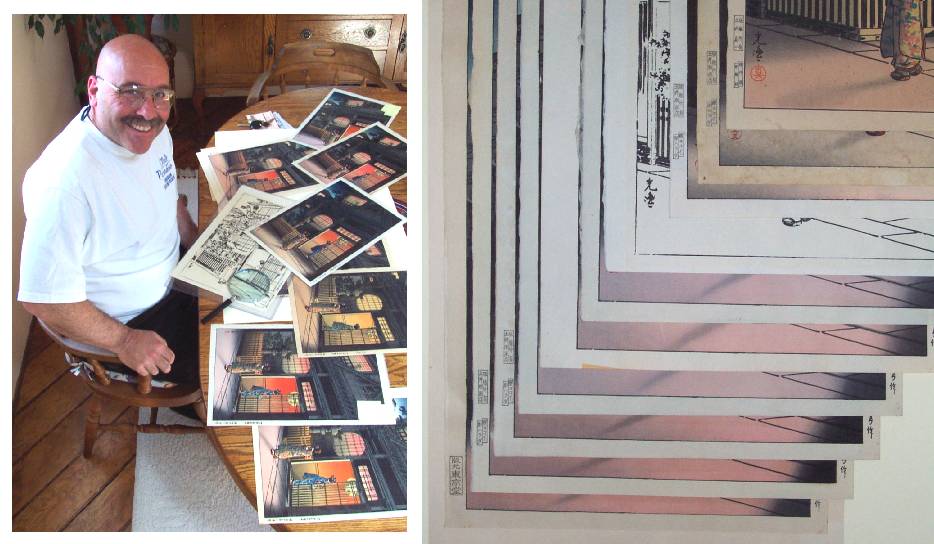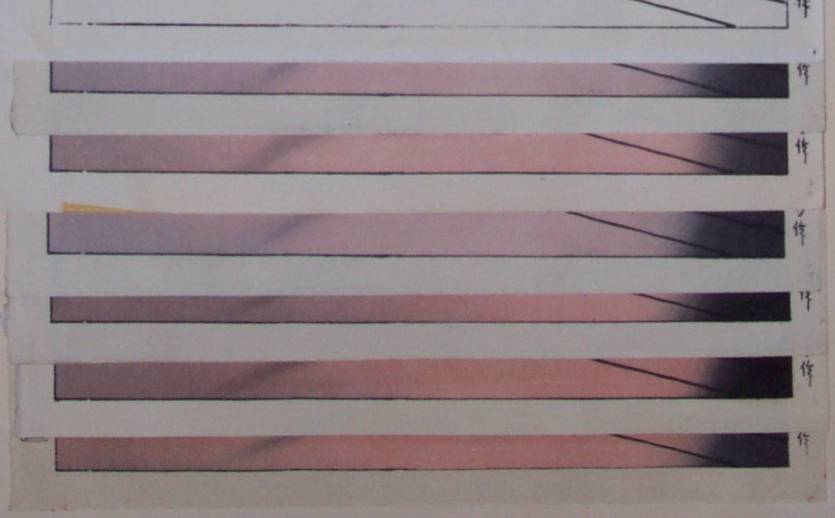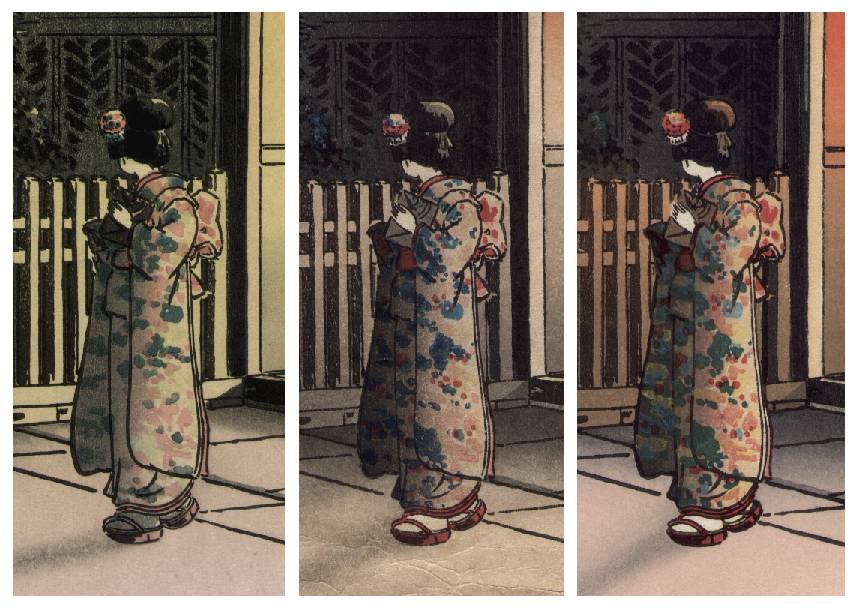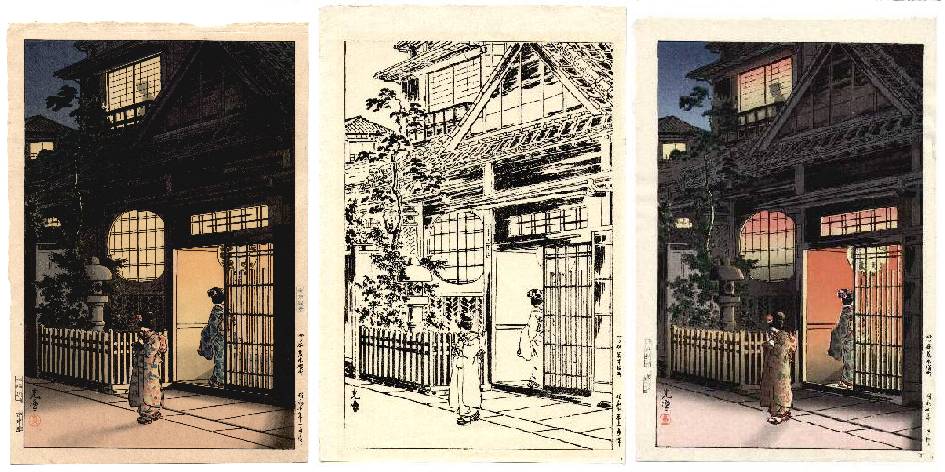
Koitsu's "Tea House at Night" (1935) -- "Hanshita" for "Tea House at Night" -- Koitsu's "Tea House at Night" (1956-62)
(A Case Study in Progress)

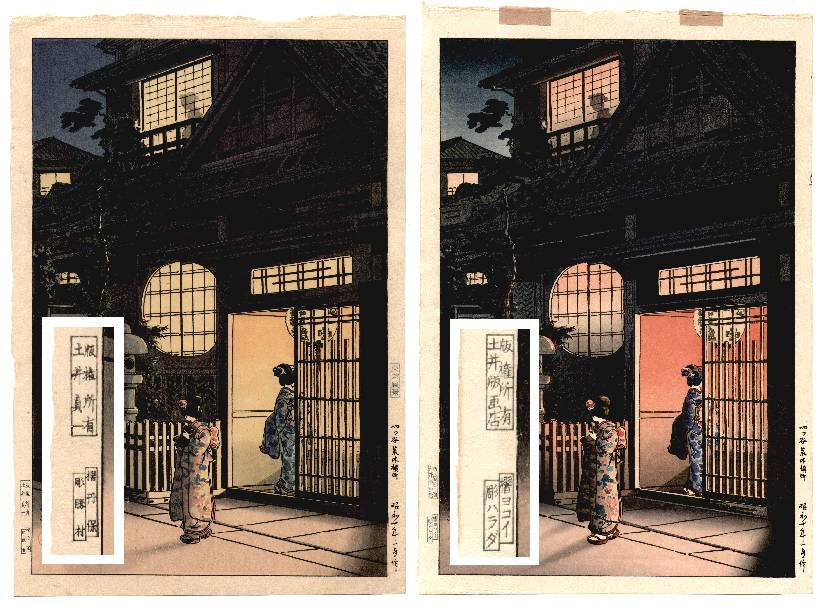
carver/printer: Katsumura/Tanbo carver/printer: Harada/Yokoi
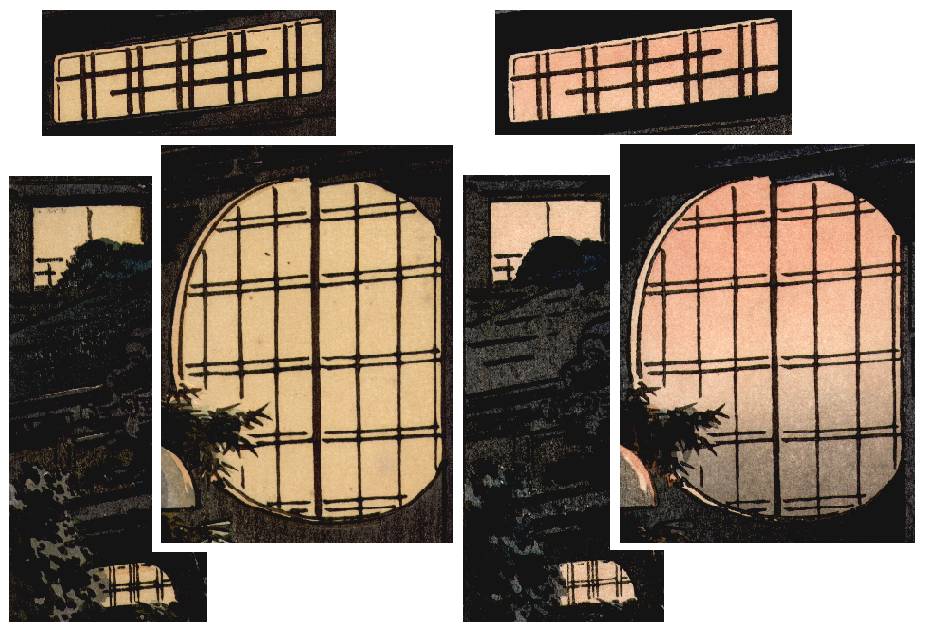
carver/printer: Katsumura/Tanbo carver/printer: "Harada"/Yokoi
